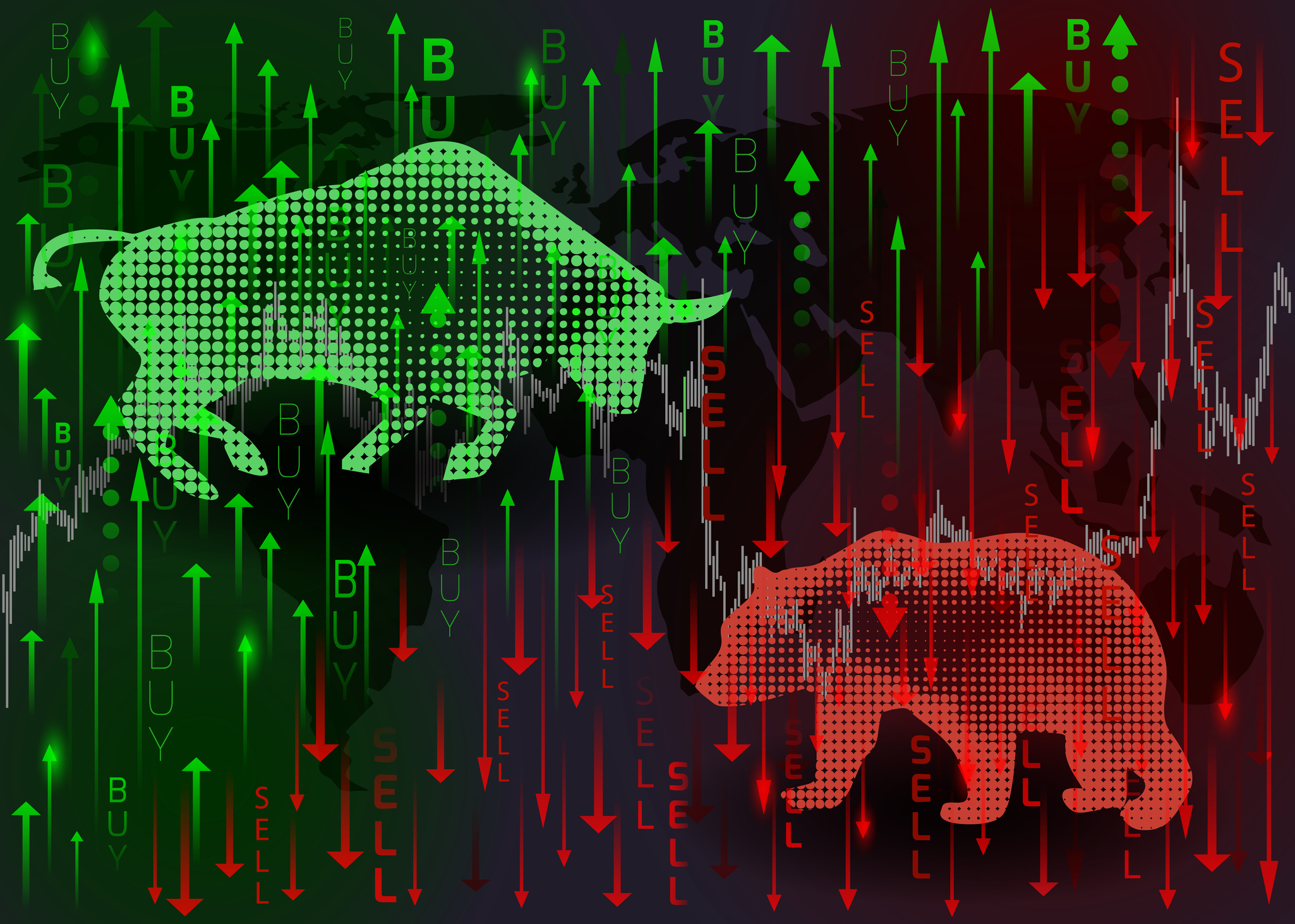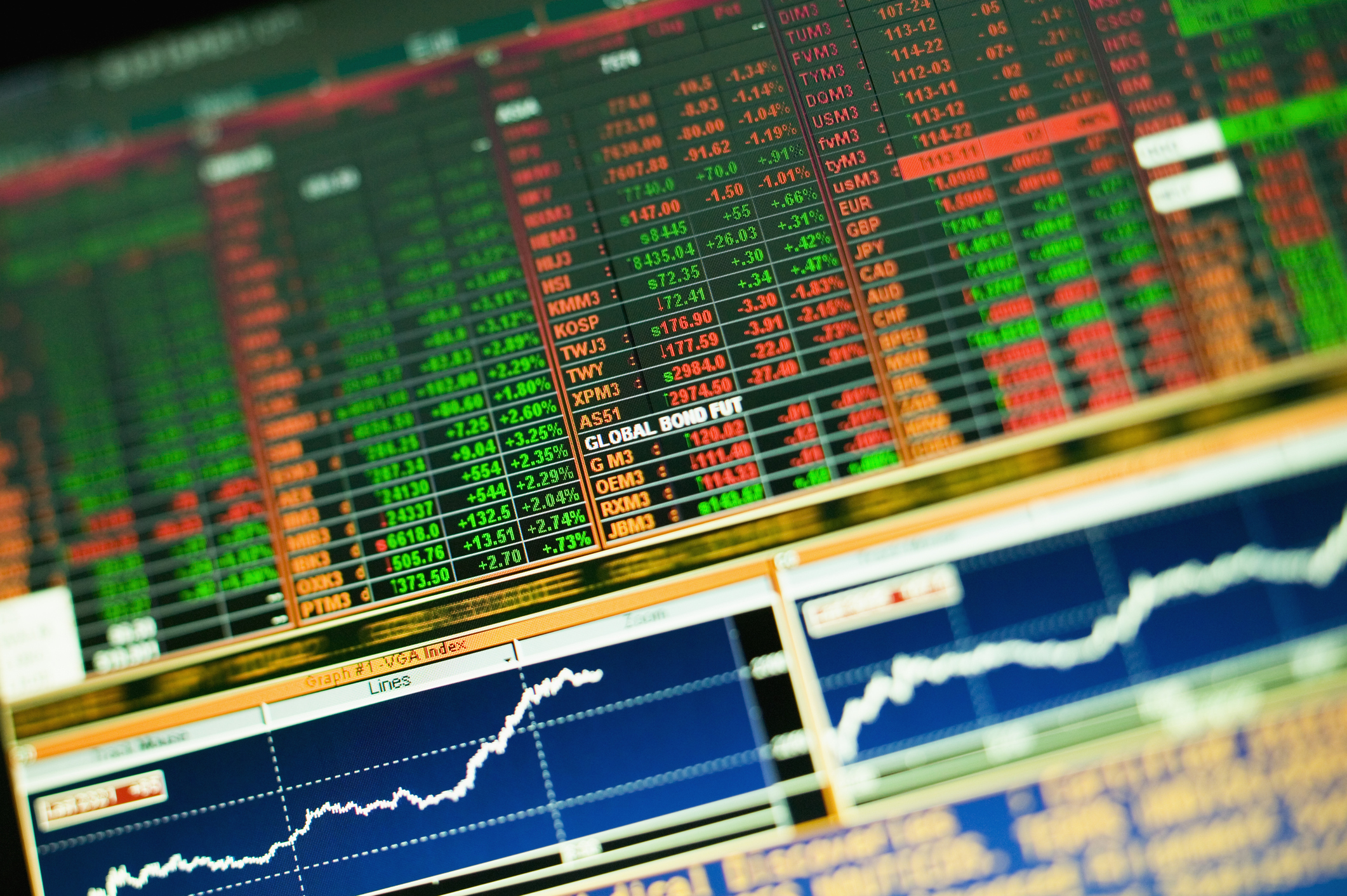More Star Power for the Kiplinger ETF 20
We spotlight new cast members in the list of our 20 favorite exchange-traded funds.

To borrow a line from a song in Rodgers and Hammerstein’s musical Carousel, exchange-traded funds are bustin’ out all over. These low-cost funds are playing a bigger role in portfolios than ever before. ETFs make up one-third of investors’ portfolios, according to a recent Charles Schwab study, up from 20% three years ago. Part of the draw is that ETFs are an attractive blend of mutual funds and stocks. Like mutual funds, they hold baskets of assets, but like stocks, they trade nimbly. More than two-thirds of investors say ETFs are their investment vehicle of choice. And nearly one-third say that they have replaced all individual securities in their portfolios with ETFs.
The first American ETF debuted 25 years ago, and it tracked Standard & Poor’s 500-stock index. Now there are more than 2,000 ETFs, and many promise to do more than just match the returns of a broad market index. Some of these “smart beta” or “factor” funds try to beat a well-known index by putting more emphasis on companies with fast-growing earnings or revenues, for example. Others aim to lower risk by homing in on shares that have a history of a smoother ride or focusing on high-quality, established firms that pay dividends.
“ETFs provide very efficient ways to make specific market bets,” says James J. Angel, associate professor of finance at Georgetown’s McDonough School of Business. New ETFs are popping up all the time, occasionally with outlandish strategies. But all in all, says Angel, the proliferation of these funds is a good thing.
From just $107.88 $24.99 for Kiplinger Personal Finance
Be a smarter, better informed investor.

Sign up for Kiplinger’s Free Newsletters
Profit and prosper with the best of expert advice on investing, taxes, retirement, personal finance and more - straight to your e-mail.
Profit and prosper with the best of expert advice - straight to your e-mail.
Our ETF picks. Three years ago, we launched the Kiplinger ETF 20, the list of our favorite ETFs. We’ve made a few shifts to the roster since then, and we’re making some now (more on that in a bit). The list includes a variety of ETFs. Some mimic broad-based benchmarks, with most of these weighted by market value (the bigger a stock’s market capitalization—its share price times the number of shares outstanding—the bigger its position in the index and in the ETF). Only one of the Kip ETF 20 tracks an index that assigns an equal proportion of assets to each stock. The group also includes sector-focused funds, actively managed ETFs and funds that tilt toward stocks with certain characteristics, such as value (bargain-priced shares) or momentum (rising share prices that are trending higher).
All of the fixed-income funds in the Kip ETF 20 held up better than the broad bond market, as measured by the Bloomberg Barclays U.S. Aggregate Bond index.
Our picks were a mixed bag. Over the past 12 months, our eight diversified U.S. stock ETFs returned 15.1%, on average, compared with a 16.7% gain in the S&P 500. The best and worst performers were ETFs that focus on a single factor. iShares Edge MSCI USA Momentum Factor, which favors shares that have risen in price over the past six and 12 months, posted the best return of the group, with a 25.6% gain. Invesco Dynamic Large Cap Value, which focuses on big firms with bargain-priced shares, was flat over the past 12 months. Shares in inexpensive stocks have lagged behind fast-growing stocks for more than a decade (see Value Takes On Growth).
All of the fixed-income funds in the Kip ETF 20 held up better than the broad bond market, as measured by the Bloomberg Barclays U.S. Aggregate Bond index. The five bond ETFs returned an average of 2.6%, compared with a 0.1% gain for the benchmark. Our corporate bond fund, iShares iBonds Dec 2021 Term Corporate, was the worst performer, with a 0.3% loss. Bond ETFs that focus on low-rated, high-yielding “junk” bonds were among our strongest gainers. Over the past 12 months, Invesco Senior Loan gained 3.0%; VanEck Vectors Fallen Angel High Yield gained 2.7%. The Invesco fund tracks an index of loans made to firms with below-investment-grade credit ratings; VanEck’s Fallen Angel fund looks for bonds issued by companies that once had investment-grade ratings (triple-A to triple-B) but have fallen to junk status (double-B-rated or below). To see how all of the funds in the Kip ETF 20 fared, see the table on the next page.
Dividend swaps. We are tweaking our dividend holdings. Two dividend-stock ETFs, Vanguard High Dividend Yield and WisdomTree International LargeCap Dividend, are getting the boot, replaced by funds that we think have a better bead on high-quality firms that are raising dividends. “Focusing on high yields alone tends not to beat the market” over the long term, says Holly Framsted, of investment firm BlackRock. Dividend payers with good records of raising payouts, on the other hand, do. Plus, she adds, the highest-yielding stocks—such as utility companies—are often viewed as bond proxies and can lose ground when interest rates are rising. (Bond prices and interest rates move in opposite directions.) Dividend growers tend to be less sensitive to rising rates.
We are also taking out the group’s two real estate investment trust funds, Schwab US REIT and iShares Mortgage Real Estate. Again, the problem is rising interest rates. As rates rise, REITs face stiffer competition from bonds and other income assets, and it becomes more expensive for REIT managers to borrow to buy properties. So far in 2018, the return on the average real estate ETF has been a modest 2.9%. And as interest rates are forecast to rise even more, performance could deteriorate. REITs are “a dangerous segment of the market” these days, says Zach Jonson, a senior portfolio manager at Stack Financial Management.
Finally, we are replacing the iShares iBond target-date corporate bond ETF with a bellwether intermediate-term bond ETF that can serve as a core bond fund holding. The iBond funds are best for investors who are laddering, a strategy that involves investing in bonds of varying maturities. We like them for that purpose, but our Kip ETF 20 roster needs a more basic and diversified core holding.
Read on to learn about the replacements. Returns and other data, unless otherwise noted, are as of July 13.
Stock ETFs
Vanguard Dividend Appreciation (symbol VIG, $105)
This fund is more concerned with whether a company has consistently boosted its annual dividend than about the size of the payout. Vanguard Dividend Appreciation tracks an index of large companies that have raised their annual payouts for at least the past 10 consecutive years. Limited partnerships, real estate investment trusts and financially troubled companies are not eligible for the ETF.
The result is 182 mostly large U.S. firms in a mix of industries, with the stocks weighted in the fund by market value. The fund rebalances once a year, as does the index it tracks. Its top three holdings are Microsoft, Johnson & Johnson and Walmart. The fund’s focus on growth, says Morningstar analyst Adam McCullough, results in a higher-quality portfolio. “It reduces the fund’s exposure to firms that may not be able to sustain their dividend payments, which is a risk that often accompanies a narrow focus on yield.”
The fund has provided ballast in times of market turbulence in the past. For example, in 2008, when the S&P 500 dropped 37.0%, Vanguard Dividend Appreciation sank 26.7%, a better showing than 97% of other funds that invest in stocks with both growth and value characteristics. It did better that year than even the typically defensive balanced funds that hold 60% of assets in stocks and 40% in bonds (those funds lost an average 28.0%).
WisdomTree Global ex-US Quality Dividend Growth (DNL, $58)
This ETF’s name suggests that it invests in firms that increase their dividends—and ultimately, it does. But it takes a winding path to get there.
The fund invests in growing, high-quality dividend-paying firms in emerging and developed countries. The quality screen sorts companies by their historical return on equity and return on assets (both are measures of profitability). The growth screen zooms in on three- to five-year earnings growth expectations. “We re-created the same quality and growth screens that Warren Buffett likes,” says Jeremy Schwartz, of WisdomTree. Stocks in the fund are weighted by their share of the dividend stream of the index—the more they contribute, the bigger their share of the fund’s assets. The rationale is that efficiently run firms with increasing earnings will likely raise dividends over time and have stocks that perform well, too.
Over the past 10 years, the fund’s annualized 4.7% return beat the average return of its peers—funds that invest in growing, large foreign firms. The WisdomTree fund even kept pace in 2017, a go-go year for international growth stocks, when the ETF’s 31.1% gain beat the average 30.9% return of foreign large-growth funds. In rocky times, its focus on quality has been a stabilizer. In 2008, the ETF lost 12.9%—far less than the 46.6% loss in the typical foreign large-growth fund.
Bond ETFs
Pimco Enhanced Low Duration Active (LDUR, $99)
We’re adding this fund to the Kip ETF 20 roster as a defense against rising rates. The managers behind the fund, Hozef Arif, David Braun and Jerome Schneider, are Pimco veterans. Their goal is to keep the portfolio’s sensitivity to interest rate moves low. The ETF currently has a 1.52-year duration. That implies that if interest rates overall were to rise by one percentage point, the fund’s net asset value would drop by roughly 1.5%. Compare that with the nearly 6-year duration of the broad bond market bogey, the Bloomberg Barclays U.S. Aggregate Bond index. The fund’s yield is 3.0%, boosted in part by investment-grade corporate debt, mortgage-backed securities and a smattering of exposure to emerging-markets and high-yield corporate debt. Over the past three years, the fund has returned an annualized 1.8%, outpacing its peers but just missing the Agg index.
SPDR DoubleLine Total Return Tactical (TOTL, $48)
We’re fans of Jeffrey Gundlach, a comanager of this actively managed ETF with Philip Barach and Jeffrey Sherman. He and Barach also run DoubleLine Total Return Bond (DLTNX), which is a member of the Kiplinger 25, the list of our favorite no-load mutual funds—although the fund and the ETF are not clones.
Total Return Tactical draws on the view of Gundlach and his asset allocation team on the global economy and world markets. The ETF currently invests mostly in bonds with credit ratings of triple-B or better that it deems attractively priced.
But almost anything goes. The fund can invest in corporate debt, government bonds, floating-rate securities, foreign corporate and government IOUs, and Gundlach’s bailiwick—mortgage-backed and asset-backed securities. There are some guard rails. No more than 25% of the ETF’s net assets can be invested in high-yield debt, and no more than 15% in foreign-currency-denominated securities. But there is no cap on mortgage-backed securities. At last report, the fund had 52.8% of its assets invested in mortgage-backed securities and 16.2% in Treasuries.
DoubleLine Total Return Tactical is designed to be a core holding and has the broad Agg index as its benchmark. Since the ETF launched in February 2015, it has returned 1.7% annualized. That edges the 1.4% gain in the index, and the ETF had almost one-third less volatility than its bogey over that time. The fund yields 3.4% and its duration is 4.7 years, implying that if rates were to increase by one percentage point, the fund’s net asset value would drop 4.7%.
Vanguard Total International Bond (BNDX, $55)
This fund tracks an index of foreign bonds, but despite its name, it doesn’t invest in every international debt security. Rather, the fund focuses on high-quality, investment-grade bonds. The portfolio is filled primarily with government and quasi-government debt issued mostly in developed countries (though 3.9% of the portfolio’s assets are in emerging-markets debt, at last report). Because the fund holds bonds issued in local currencies, not U.S. dollars, Total International Bond hedges against currency risk, which sets it apart from many world bond funds. Hedging “smooths the ride,” says Wyatt Lee, of T. Rowe Price Group, who notes that “currency [fluctuations] can double the volatility of a global bond fund.”
Indeed, over the past 12 months, Total International Bond ETF returned 3.6%, better than 94% of its peers (only some of which hedge) with half the volatility. Over longer stretches, the pattern holds. The fund beat its typical peer by an average of 3.5 percentage points per year over the past five years—again, with half the volatility.
The caveat is the fund’s nearly 8-year duration, implying an 8% decline in net asset value for every one-point rise in rates. Although interest rates abroad are currently low and expected to stay that way for the time being—especially in Japan and Europe, where much of the fund’s assets are invested—when interest rates eventually rise, it could crimp returns. We’ll be keeping an eye on that.
The best way to invest in ETFs
Exchange-traded funds have their own special quirks. Here’s what you can do to manage them.
Buy commission-free. Exchange-traded funds trade like stocks, which ostensibly means that you must pay a brokerage commission to buy and sell fund shares. But many online brokerage firms let you trade hundreds of ETFs without paying a commission. Vanguard offers almost 1,800 ETFs with no sales charge on its trading platform. Check your brokerage firm’s website for its list of commission-free ETFs.
Use limit orders. Limit orders allow you to specify the price at which you are willing to buy and sell shares. Like stocks, ETFs have a bid price (the highest price a buyer is willing to pay) and an ask price (the lowest price a seller is willing to accept). The bid and ask prices of most of the funds in the Kiplinger ETF 20 will vary by only a few pennies because they’re widely owned and traded. In that case, says James Angel, a professor at Georgetown University, you should place a limit order at the ask price. If the difference is wide, place a limit order at a price in between the bid and ask.
Trades placed at the open and the close of the market can end up costing you more because of increased price volatility.
The strategy usually guarantees that your trade will be filled instantly. “But it will also protect you from a flash crash,” says Angel. He’s talking about those rare moments, as occurred in 2010 and 2015, when spiraling market volatility caused ETF share prices to plummet dramatically and unexpectedly. In both instances, prices recovered quickly. But many investors found they’d unintentionally sold positions at or near the bottom, undone by brokerage orders executed at the best available price—which in a crazy market can be a misnomer. Better to use limit orders, which are executed only if you can obtain the price you specify. “The risk of another flash crash is low, but it’s not zero,” says Angel. Flash crashes can come out of nowhere, but in general it’s a good idea to avoid trading on days of high market turbulence.
Don’t trade at the beginning or the end of the trading day. Trades placed at the open and the close of the market can end up costing you more because of increased price volatility. “The first and last half hour of every trading day tend to be chaotic,” says Todd Rosenbluth, an analyst at investment research firm CFRA. Trades placed after the market closes—a service that some online brokers now offer—may cost you more, too. Fewer people trade then, which can result in wider bid-ask spreads. Says Angel, “The later in the day it gets beyond the close, the worse the pricing will get.”
Know what you own. No matter how straightforward you think an ETF is, “do your homework,” says Rosenbluth. Take a few minutes to understand how the fund is constructed and what it actually holds by reading the fund’s one-page fact sheet or, better yet, its prospectus. Some funds, such as those that screen for multiple factors, require as much research as you would put into a decision to buy an actively managed fund, says Yasmin Dahya, of J.P. Morgan Asset Management.
Remember the risks. Traditional benchmarks weight their holdings by market value—the bigger the capitalization, the bigger its spot in the benchmark. That means that index investors are in essence momentum investors, putting the most money into the stocks that have risen the most, says Zach Jonson, a senior portfolio manager at Stack Financial Management. That has worked to investors’ advantage during the strong bull market, with big-company stocks such as Alphabet and Amazon.com rocketing higher. But remember that in an index fund, by definition, you participate in all of the market’s gains and “100% of the next bear market’s decline,” says Jonson.
Don’t follow the herd. The explosion in the number of niche ETFs has led to “performance-chasing at the worst possible times,” says Jonson. So-called factor ETFs let you invest in slivers of the market that may perform extremely well at times, attracting eager investors who rush in at market tops. “They get in too late and buy high and sell low,” says Angel.
Go active with bonds. It pays to seek out actively managed ETFs, especially with intermediate-term bond funds. A study by investment research firm Morningstar that compared actively managed funds against their index fund counterparts found that active managers in funds that focus on medium-term, high-quality bonds had the best long-term success rate of all the fund categories scrutinized. That’s the main reason we stuck with actively managed ETFs in our core bond category.
Profit and prosper with the best of Kiplinger's advice on investing, taxes, retirement, personal finance and much more. Delivered daily. Enter your email in the box and click Sign Me Up.

Nellie joined Kiplinger in August 2011 after a seven-year stint in Hong Kong. There, she worked for the Wall Street Journal Asia, where as lifestyle editor, she launched and edited Scene Asia, an online guide to food, wine, entertainment and the arts in Asia. Prior to that, she was an editor at Weekend Journal, the Friday lifestyle section of the Wall Street Journal Asia. Kiplinger isn't Nellie's first foray into personal finance: She has also worked at SmartMoney (rising from fact-checker to senior writer), and she was a senior editor at Money.
-
 Investors Buy the Nasdaq's Big Dip: Stock Market Today
Investors Buy the Nasdaq's Big Dip: Stock Market TodayStocks are up and down again to end an up-and-down week ahead of big earnings announcements and the eventual return of regular economic data flow.
-
 What to Know About Portable Mortgages
What to Know About Portable MortgagesA closer look at how portable mortgages would work, who might benefit and why the concept is gaining attention amid high rates and limited supply.
-
 How Our Favorite ETFs Are Performing Amid Market Volatility
How Our Favorite ETFs Are Performing Amid Market VolatilityA roller-coaster year for the stock market has weighed on several of our favorite ETFs, but one equities fund is faring better than others. Here's why.
-
 5 Dividend Growth ETFs to Buy
5 Dividend Growth ETFs to BuyDividend growth ETFs can provide investors with a steadily growing stream of passive income and exposure to quality companies.
-
 The Best ETFs to Buy Now
The Best ETFs to Buy NowFinding the best ETFs to buy in an uncertain market environment can seem like a tall task, but these five picks are a good place to start.
-
 The 5 Best Actively Managed Fidelity Funds to Buy and Hold
The 5 Best Actively Managed Fidelity Funds to Buy and Holdmutual funds Sometimes it's best to leave the driving to the pros – and these actively managed Fidelity funds do just that, at low costs to boot.
-
 The 12 Best Bear Market ETFs to Buy Now
The 12 Best Bear Market ETFs to Buy NowETFs Investors who are fearful about the more uncertainty in the new year can find plenty of protection among these bear market ETFs.
-
 Don't Give Up on the Eurozone
Don't Give Up on the Eurozonemutual funds As Europe’s economy (and stock markets) wobble, Janus Henderson European Focus Fund (HFETX) keeps its footing with a focus on large Europe-based multinationals.
-
 Vanguard Global ESG Select Stock Profits from ESG Leaders
Vanguard Global ESG Select Stock Profits from ESG Leadersmutual funds Vanguard Global ESG Select Stock (VEIGX) favors firms with high standards for their businesses.
-
 Kip ETF 20: What's In, What's Out and Why
Kip ETF 20: What's In, What's Out and WhyKip ETF 20 The broad market has taken a major hit so far in 2022, sparking some tactical changes to Kiplinger's lineup of the best low-cost ETFs.